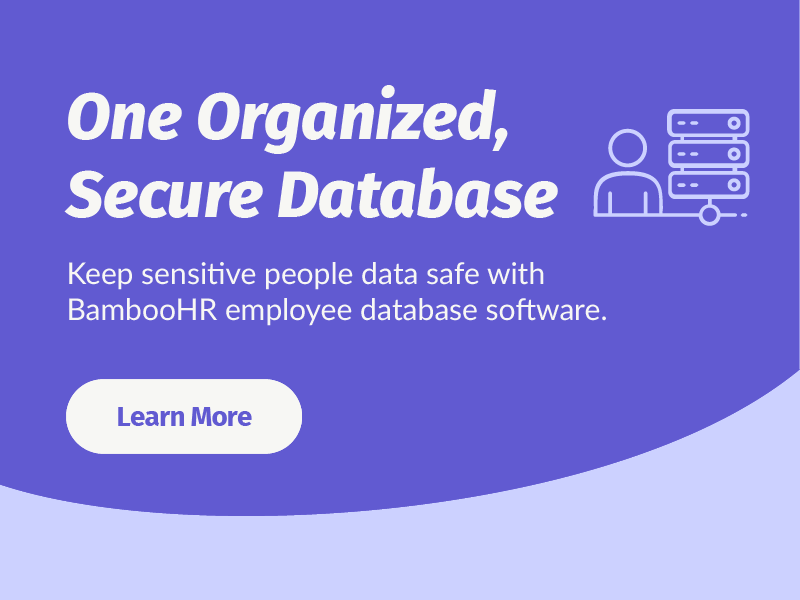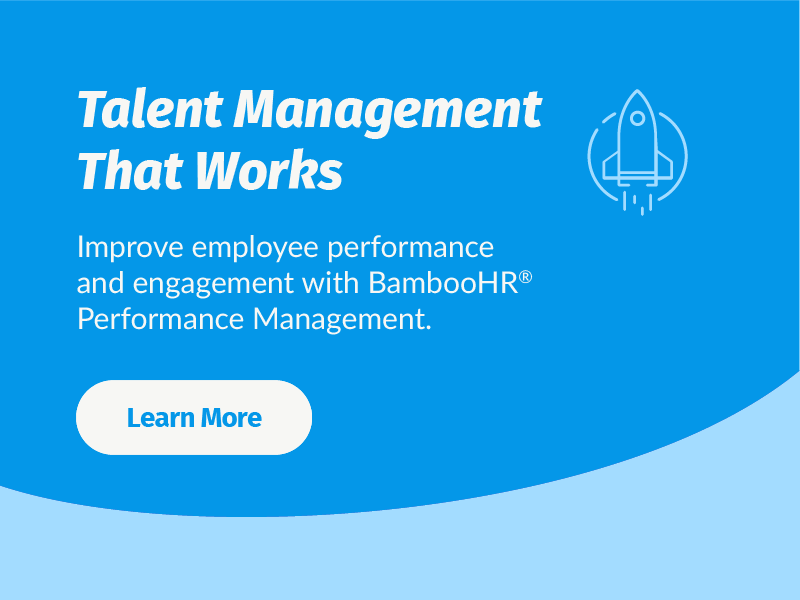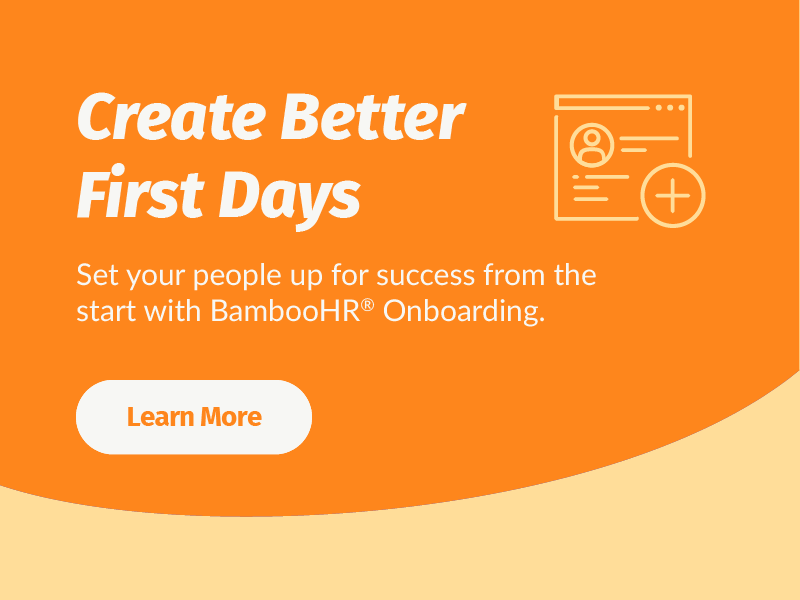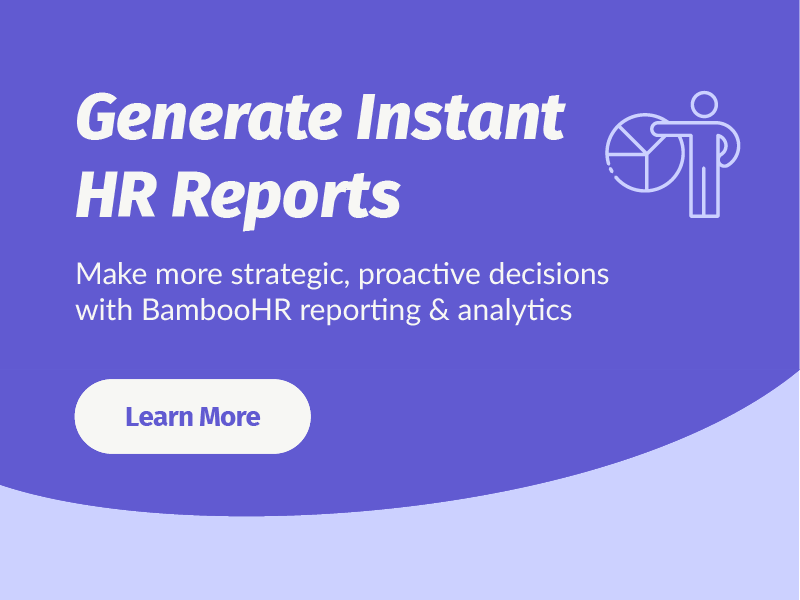Finding the Best HR Software for Your Small Business
As your small business grows and adds more people, so grows the complexity of day-to-day tasks and processes—especially in the realm of human resources. A headcount report that used to take ten minutes now takes a few hours; a hiring process that used to be fast and easy is now slow and cumbersome. Without the right tools and software, complexity can stunt your organization’s growth and hamper success.
But with HR software, you can simplify the complex, streamline the time-consuming, and empower your people to do great work. The best HR software for your small business will meet your organization’s needs today and support your continued growth tomorrow. But how do you determine those needs? And how can you tell which HRIS has the features you really need? Our guide will help you identify some of the most important HRIS features and learn how to find the best HR software for your small business.
Evaluating Your HR Software Needs as a Small Business
If you’re a small business, you probably don’t need all the bells and whistles that a Fortune 500 company might want from its HR software, like multinational PTO tracking. But you also want software with enough oomph to solve your most pressing issues.
The key to selecting the best HR management software for your organization is to figure out what your organization needs for its HR to be successful now and in the future. What do you need from your HR software today? What will you need in a year, or in five years? Our HRIS Buyer’s Guide is designed to help you answer these and other questions, so get yourself a free copy as you go through this process.
According to our guide, before you start shopping around for software, you should consider these three items:
- Immediate HR problems like reducing time-to-hire or organizing employee records
- Projected challenges for the next one to five years like creating an effective onboarding process or improving the candidate experience
- Overall company goals like building a positive employer brand or increasing employee satisfaction
Once you’ve identified items in these three categories, decide what HR activities will help you address those challenges. For example, if organizing and securing employee records is an immediate challenge for your organization, then centralizing your records could be an HR activity you want to list. If creating an effective onboarding process is a projected challenge, then you might list streamlining new-hire data collection.
Evaluating your organization’s needs this way can help you select the best HRIS for your small business—one that will be useful for several years instead of one you’ll need to replace as soon as your needs evolve.
5 Important Features of HR Software for Small Business
After you’ve done the legwork of identifying key HR activities for your organization, you need to determine what features will support those activities. According to our recent survey, five things matter most to a majority of small business owners and HR professionals:
- Culture & employee experience
- Performance & engagement
- Finding & hiring talent
- Effective onboarding
- HR reporting
Assuming these things matter to your organization, the best HR software for your small business should have features to support such activities and initiatives. We’ll go over some of those key features now, but don’t be afraid to add others to your list of must-haves according to your company’s unique needs.
Employee Database
Having a single, secure database for all of your employee records is vital to creating a great employee experience and a positive company culture. It can help your HR team stay organized and compliant so there’s no more question of where you put that form or if that spreadsheet is up to date.
Employee self-service allows employees to access their personal information and make updates themselves instead of taking all their questions about time off and address changes to HR every day. This way, employees have a smooth, easy experience with their own information, and your HR team can focus on culture initiatives instead of a backlog of questions.
Performance Management
Our survey also found that only about one-third of respondents were satisfied with their organization’s performance management process. Some of the biggest challenges they named were that their performance reviews didn’t actually improve performance, they took too much time, or they didn’t happen frequently enough.
For a small business with a growing workforce, the ability to exchange frequent, meaningful feedback quickly is crucial. HR software with an integrated performance management system can make this easier in a number of ways. First, with automatic scheduling and reminders, you can save time and make sure nobody goes too long without feedback. Next, you can standardize your organization’s evaluations so every manager asks the same thoughtful questions. Third, your HRIS can generate performance reports that allow you to track performance over time and see if your people are improving.
Applicant Tracking System
Attracting and hiring top talent is a big challenge for many small businesses. Your organization has to be quick and agile in its hiring while still being thorough in selecting high-quality hires. How do you balance it all?
An HRIS with a built-in applicant tracking system can help. An ATS allows you to post your open positions to multiple job boards at once so you can reach your candidates wherever they may be searching.
Then, once the applications start pouring in, you’ll have a single place to store candidate data like applications, resumes, interview notes, and more. This makes collaboration a breeze for hiring managers and recruiters, and you can better communicate with all candidates throughout the process. Finally, when you’ve selected the right candidate for your opening, you can save time by sending an automated offer letter with all the most important information included.
Automated Onboarding
Of our survey respondents, 56 percent said their organization used a manual checklist to keep track of all necessary onboarding tasks—and six percent said they have no onboarding process to speak of. If your small business falls into one of these categories, it may be time for an upgrade, and HR software can help.
With automated onboarding as part of your HRIS, you won’t have to worry about keeping track of manual to-do lists. Instead, you can create an automated onboarding checklist that notifies the necessary people and teams about their tasks. This can include having IT set up a new hire’s workspace, ensuring the hiring manager reaches out to the new hire to say welcome, and more.
Best of all, an automated onboarding system lets you create a new-hire packet with all the information and documents new employees need before their first day of work. With e-signatures, they can sign all the right forms before they come in, meaning they’ll spend more of their first day meeting their teammates and getting settled (not signing paperwork).
Reporting & Analytics
For small businesses to make the most of their HR initiatives, they need to measure the impact those initiatives have. The best way to do that is through HR reporting and analytics—a task that HR software can streamline considerably. Especially in a time when nearly a third of executives wish they heard from their HR teams more frequently, you can’t afford to have a slow reporting process in your organization.
An HRIS with automated reporting can help you get the data you need the moment you need it. Built-in reports inside of your software make it easy to generate the most common and important reports like headcount and turnover.
Beyond that, the best HR software will also give you the power to create customized reports to keep track of your organization’s unique information and metrics. With the ability to generate detailed reports at a moment’s notice, your organization will be able to focus on making strategic, data-driven decisions instead of flying blind.
Conclusion
While this list is by no means exhaustive, these core features will give your organization a great foundation for successful HR. Keep these features in mind as you search for the best HRIS for your small business, and make sure you’re choosing software that will meet your needs now and support your growth in the future.
Once you’ve found some HR software options (like BambooHR), you can start to plan further for things like implementation, adoption, creating a business case, and more. You can learn how to manage all these steps and more in our free HRIS Buyer’s Guide. Check it out today and set your small business up for HR software success.
Get caught up every month on all things HR. Don't worry, we promise we won't spam you.
Tori Fica is a copywriter for BambooHR, the leading HR software solution for small and medium businesses. Through research, analysis, and writing, she creates content to help HR professionals think and plan more strategically. Her focus is on taking complex ideas and in-depth research and turning them into clear, digestible pieces of content.













